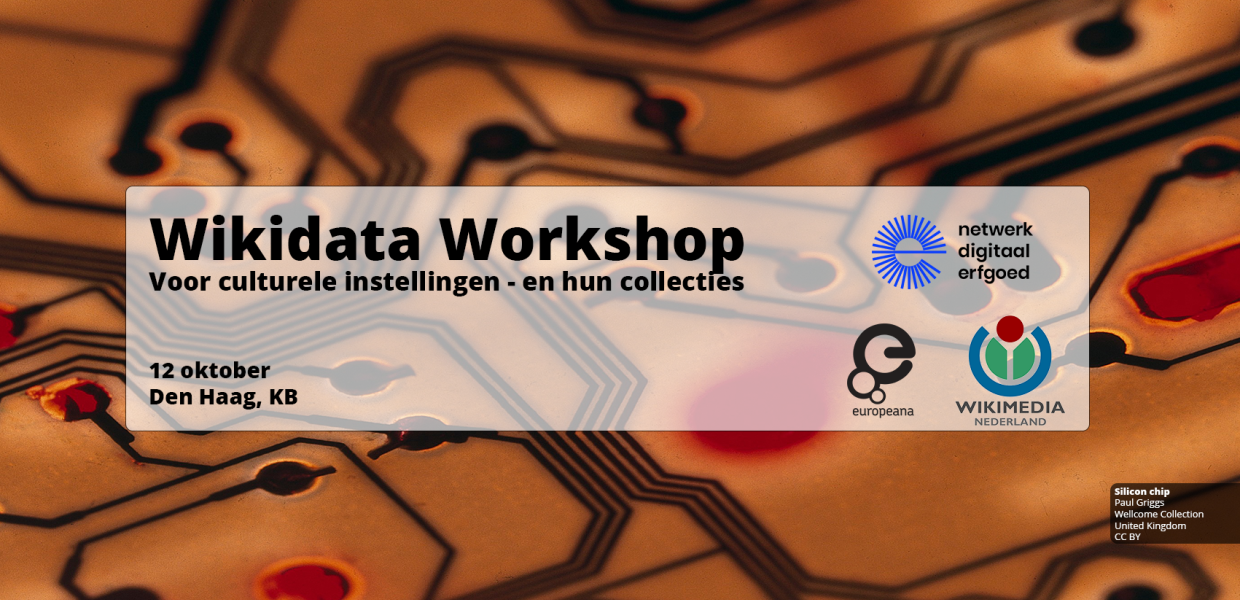What Dutch GLAMs want from Wikidata
After the past few Wikidata workshops, it has become clear that Wikidata is in demand in the GLAM sector. The main question now is: ‘How do we start?’.

Dutch galleries, libraries, archives and museums (GLAMs) are interested in the value that Linked Data can bring to their collections. They are looking for insight into how they can turn this theoretical value into practice, and they seek more workshops and tutorials on using Wikidata tools in their daily work. These are the outcomes of the Wikidata workshop from 12 October, organised by Netwerk Digitaal Erfgoed, Wikimedia Netherlands and Europeana. The workshop, packed with data enthusiasts from all over the Netherlands, showed that Dutch GLAMs are enthusiastic about taking the quality of their collections to a higher level.
So what is Wikidata’s value to GLAMs?
Structuring the metadata of cultural heritage objects as Linked Data brings a lot of potential benefits: it can increase the findability of your objects, allows for multilingual searches for the same term and automatic translations, and the addition of more information on an object from other sources, to name a few. Both the workshop organisers as well, as some representatives from GLAMs themselves, talked about the ways that they find value in using Wikidata in their collections. Learn more about how and why we think you should create Linked Data vocabularies.
On the one hand, I would love to see more of these kinds of workshops, especially ones combining theory and practice. On the other hand, as someone working in a Museum, I feel the need to situate all these opportunities: how are we going to implement this in our institution? What does it mean for our collections? Will data from Wikidata flow back into our own Collection System? I feel like I want to learn more about how the semantic web can feed into our own collections and processes.
- Wikidata workshop attendee
Putting Wikidata into practice
Testimonies from GLAMs provide a lot of insight into taking the first steps towards using Wikidata in cultural heritage collections. Erfgoed Gelderland showed how setting up pilot projects and recruiting a Wikimedian-in-residence are great ways to start collecting expertise and building a linked data infrastructure in your own institution. Jesse de Vos and Ursula Oberst showed how they went through the process of using available open-source free-to-use tools to connect their cultural heritage collections to Wikidata entities (presentations here and here). Knowing that there are tools like OpenRefine and Mix’n’Match out there to help is great, but learning how to use them and get the most out of features is where the real value lies.
@Europeanaeu @DigitaalErfgoed ❤ #Wikidata at Workshop Structured data in The Hague pic.twitter.com/cjkkOoikyy
— Wikimedia Nederland (@wmnl) October 12, 2018
Find introductions and tutorials to start using Wikidata today
By far the biggest request from people attending the workshop was that they wanted to find more workshops, tutorials and places to get hands-on beginner experience in using Wikidata. There is a myriad of resources already available, from the gentle introduction to Wikidata for complete beginners on Youtube to steps on how to ingest data into Wikidata, and the more advanced guides on how to understand (and maybe even write) a SPARQL query.
With the success of these kinds of Wikidata workshops in the Netherlands, other Wikimedia chapters across Europe could start doing the same to engage their local GLAMs to become more involved in Wikidata to enrich their collections. Where would you like to see the next Wikidata workshop take place?
Recommended tools & resources on getting started w wikidata pic.twitter.com/m1VRdNpqbq
— Chris Meyns (@chrismeyns) October 12, 2018
Find this workshop’s information and presentation slides.

